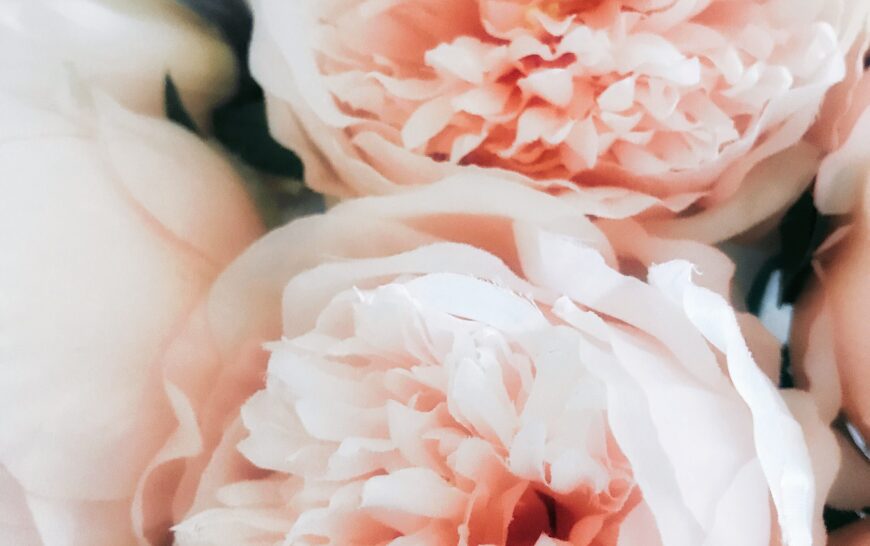
Women’s health is misunderstood and overlooked, period. Whilst sex education may be becoming more inclusive and conversations less taboo, women and vulva owners are experiencing pain both in the bedroom and beyond and the impact is devastating.
Chronic sexual and vulval pain can fit into a whole host of diagnoses, but two of the most common and overlapping conditions include Vulvodynia and Vaginismus, which can affect people of all ages, backgrounds and sexualities. The nature of these conditions can be difficult to discuss and often mean people suffer in silence, but open conversation is the first step toward a society that prioritises women’s health and wellbeing and allows us to feel safe discussing these complex and sensitive issues.
2020 showed us all that health truly is wealth, and normalising these topics is a true priority in helping support vulva owners suffering physically and mentally with traditionally difficult to discuss conditions. Here’s to being the allies those in pain need.
What is Vulvodynia?
According to the NHS, Vulvodynia is a “persistent, unexplained pain in the vulva” with the main symptoms including burning, stinging, throbbing and stabbing pain. These sensations can be constantly present, or provoked during sexual intercourse or day-to-day activities such as sitting down for long periods of time or wearing tight clothing such as jeans. Vulvodynia is not contagious and has no relation to personal hygiene.
Forty percent of people seeking treatment for Vulvodynia are not accurately diagnosed after seeing as many as three doctors
Much of the difficulty with Vulvodynia lies in the fact that visibly the vulva appears ‘normal’ in appearance meaning acquiring a diagnosis can be another emotionally challenging aspect of living with this condition. Forty percent of people seeking treatment for Vulvodynia are not accurately diagnosed after seeing as many as three doctors (Harlow 2003) and the stress of this process can contribute to worsened pain and a sense of being dismissed by medical professionals.
The cause of Vulvodynia is still relatively unknown and doctors, dermatologists and pelvic floor physiotherapists remain somewhat mystified by the precise causes of intense vulval pain. The NHS states these symptoms could be a result of previous surgery, childbirth, trapped nerves or a history of severe vaginal thrush, but in reality each case is different and oftentimes there appears no direct trigger, once again adding to the emotional weight sufferers can feel.
Vulvodynia is a complex and difficult condition to live with, made even more so for those who suffer with this in combination with Vaginismus…
What is Vaginismus?
Vaginismus is the body’s reaction to a perceived threat or anxiety, causing the vaginal muscles to involuntarily contract when penetration is attempted. This can occur during sexual intercourse, when attempting to use a tampon or even simply when the surrounding pelvic areas are touched. Similarly to Vulvodoynia, there are normally no physical abnormalities present during a pelvic exam, however this does not make the symptoms any less difficult to manage. Vaginismus can be present throughout an individual’s life meaning penetration has never been achieved, or it can happen after a trauma or difficult event as the body’s coping mechanism.
Vaginismus can be present throughout an individual’s life meaning penetration has never been achieved, or it can happen after a trauma or difficult event as the body’s coping mechanism.
Pain of this nature- burning or stinging upon entering the vagina- can be extremely difficult to cope with, and therefore the fear of the sensations that comes with vaginal penetration can lead to decreased sexual desire and difficulties in maintaining relationships- an additional struggle that people may feel burdened by.
Life with Vulvodynia and pain management…
Typical treatment for Vulvodynia includes oral medication prescribed in an attempt to manage symptoms, namely Amitriptyline, Nortriptyline (both antidepressants), Gabapentin (an anti-epileptic drug that can be used for pain) or Pregabalin. Low doses of these medications are the longstanding go-to for chronic pain treatment, however their effectiveness varies vastly from individual to individual, and many of these drugs have side effects that can also become difficult to manage and interrupt daily life.
Examples such as this support the theory that Vulvodynia pain can primarily be caused by emotional trauma or distress
More invasive treatments can include the injection of Botox into the pelvic floor muscles in order to forcibly relax them, however, this is an extremely expensive course of treatment and its results are relatively short term. Surgery is also sometimes considered in extreme cases in order to remove the most painful or problematic areas of the vulva if possible, however, this is a last resort option as some patients report the same or worsened pain even after surgery. Examples such as this support the theory that Vulvodynia pain can primarily be caused by emotional trauma or distress and therefore physical changes can be obsolete or temporary in their effectiveness.
Pelvic floor physical therapy is also often recommended as a non-invasive, natural approach to managing pain and releasing tension in the pelvic floor.. Women’s health physiotherapists possess a wealth of knowledge about these conditions in comparison to general practitioners, and seeking out this treatment route can help people emotionally in feeling understood, listened to and believed.
Managing vulval pain can be made easier with some lifestyle adjustments too, including wearing loose, cotton underwear, using unscented products to wash with, avoiding tight clothing like jeans and applying numbing creams such as Lidocaine before exercise or intercourse. This advice is widely accepted and promoted by doctors, however some argue that it normalises the idea that vulval pain is something sufferers must manage and not be able to cure- an idea that members of the mind-body chronic pain community such as Nicole Sachs would widely dispute. Her podcast ‘The Cure For Chronic Pain’ is a great resource for learning more about this.
Life with Vaginismus and pain management…
Treatment for Vaginismus can overlap with that of Vulvodynia when it comes to mindfulness, however the emphasis here is creating positive associations with penetration that allow the mind and body to relax and limit the tensing of pelvic and vaginal muscles. Vaginal dilators- tube-shaped devices used to stretch the vagina- are one of the first steps often recommended by doctors as they range in size from small (around the size of a finger) to much larger, allowing for manageable progress to be made in insertion.
This can be done alone or with a partner and aims to reduce anxiety and pain upon penetration. In combination with this, mindfulness and stress reduction techniques are encouraged, in addition to CBT (Cognitive Behavioural Therapy) or psychosexual therapy to manage the emotional stress this condition can place on an individual or a relationship.
Mind-body work and its potential role in healing…
The Western medical model often leans towards pain management drugs and antidepressants to manage vulvar and vaginal pain, however the lack of research and true understanding of these conditions mean it is debated as to the effectiveness of these methods. For some, medication is absolutely necessary to manage day-to-day living and allow for an active lifestyle, however in many cases these drugs offer temporary solutions that mask the pain as opposed to getting to the root of the problem. The journey one takes in healing and living with these conditions is an extremely personal one, but increased conversation about mindfulness, stress reduction and the mind-body connection online and from women’s health specialists and doctors shows major potential for more holistic approaches.
Books such as The Body Keeps The Score by Bessel van der Kolk discuss the impact of psychological trauma and stress on the body and the ways in which emotional distress can cause physical symptoms and pain. Symptoms of vulvar and vaginal conditions and the intensity of pain that come with them are no less valid because they do not have a physical source, and research now supports the theory that emotional trauma can in fact cause a change in the brain that result in a heightened fight or flight system that sets off pain unnecessarily. John Sarno was one such pioneer of this theory and his work in chronic back pain has changed the course of treating and healing those in chronic pain in all areas of the body.
We spoke to one anonymous Vulvodynia sufferer who has been battling vulval pain symptoms for 10 years and had tried everything before discovering mind-body work- “pills, lotions, potions, an operation, PT, acupuncture. You name it, I probably tried it.”
About 18 months ago I was at my wit’s end with it and didn’t think I could carry on. I was in pain all the time, living in maxi dresses/skirts with no underwear and constantly standing up or lying down. My relationship was dying and I didn’t do any intimacy at all. Two years of EMDR therapy, 18 months of engaging in mind-body work and I recently wore jeggings for the first time in 10 years!
I also can’t remember the last time I had more than a little bit of discomfort down there, whereas for 9+years it was nearly all the time. I feel like I’m getting my old life back. I sit down all day, have taken up new hobbies and am tentatively starting to get back into intimacy. This work literally saved my life.
Anonymous
The methods used to treat chronic pain conditions are hugely personal, but the ever changing evidence and anecdotes that allow sufferers to make informed choices about their bodies is only ever a positive.
Where to find support, resources and information online?
Although these topics still remain difficult to discuss for many, social media has come through once again (Instagram we heart you) and is the home to endless educational resources, individual experiences of sufferers and communities of supportive individuals looking to help one another in their healing journeys. Below, we’ve listed some of our favourite women’s health Instagram accounts opening the discussion around Vulvodynia, Vaginismus and the other pelvic pain issues women and vulva owners face, and encourage you to give them a follow to support in your own journey or that of someone you love.
thevhive | thepelvicwarrior | the.happy.pelvis | wellbeing.by.penny | queensofeve | Myvitalside | julieobriencoaching







